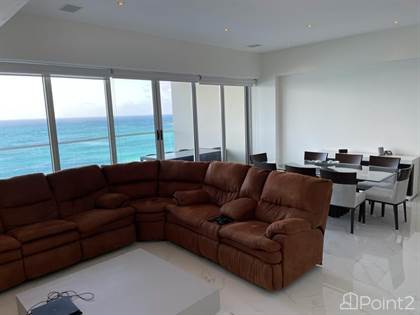
Cancun International Airport (Photo Credit: Alexander Canas Arango / ) 2. The smaller populations of these towns mean that tourists often intermingle with the locals, seeing what their everyday life is like. The largest town in the Riviera Maya, Playa del Carmen, has a population of 250,000 people, relatively small when compared to the population of Cancun. Popular cities in the Riviera Maya include Playa del Carmen, Tulum, Puerto Morelos, and Puerto Aventuras. The Riviera Maya, which is located just south of Cancun on the Yucatan Peninsula, is a region made up of several small towns. This makes for a large separation between the tourist experience and the local experience. Tourists flock to Cancun’s hotel zone to enjoy the beautiful turquoise waters of the Caribbean, while the majority of Cancun’s residents live in its downtown area where few tourists venture. At the time of publication, the population of Cancun was nearly one million people. Cancun: Large And Touristy CityĬancun, located on the northeast tip of the Yucatan Peninsula, is the largest city in the Yucatan Peninsula.

The biggest difference between Cancun and the Riviera Maya is the fact that Cancun is a city and the Riviera Maya is a region made up of many small towns. Understanding the major differences between the two areas will help you to choose the best location for your style of travel, so let’s dive in and explore what Cancun and the Riviera Maya have to offer! Akumal, a small coastal town in Riviera Maya (Photo Credit: phortun / ) 1. After they greet you with their balmy beach climate, they beckon you to stay a little longer with the lure of Mexican hospitality and the thought of sipping tequila under the sway of the palm trees.Ĭomparing the two is actually very common and though often used interchangeably, these two tourist hot spots are actually very different destinations! We find ourselves lounging on the white sand beaches one to two times a year since Cancun is a quick and easy trip from Dallas, Texas.Ĭancun and the Riviera Maya both boast fabulous locations on the Caribbean Sea, welcoming visitors from all over the world. Rightfully so! Well, all of that and more exists on the beautiful eastern coast of Mexico in Cancun and the Riviera Maya. My husband and I have been visiting Cancun for over 20 years. Quintana Roo switched to Eastern Standard Time (EST) in 2015.Mention a Mexican beach vacation and people generally think of gorgeous turquoise waters, white-sand beaches, and drinks made with tequila. In 1928, clocks in Mexico's capital city were advanced by 1 hour to CST, the time zone it still observes as standard time today.Īt first, Mexico was divided into only two time zones. In 1922, Mexico turned its clocks back by 23 minutes and 24 seconds, so the local time was precisely 7 hours behind GMT. In Mexico City, it was 6 hours, 36 minutes, and 36 seconds behind GMT-the world's time standard back then. Until then, each location in the country had been using solar mean time based on its longitude. It will become active again after the next clock change as Daylight Saving Time begins or ends. The above time zone is used during other parts of the year. Time Zone Not Currently Being Observed in Mexico Offset Note: Local time in these time zones changes when Daylight Saving Time begins and ends. Generalized Time Zones in Mexico Time Zone Abbreviation & Name However, most municipalities near the country's northern border follow the DST schedule of the United States. Mexico abolished Daylight Saving Time (DST) in most of the country on October 30, 2022. Baja California, bordering California and the Pacific Ocean, is on Pacific Standard Time ( Zona Noroeste) Quintana Roo, Mexico's easternmost state, observes Eastern Standard Time ( Zona Sureste). These two areas, covering nearly all of Mexico, are flanked by much smaller time zones in the country's far east and far west.

Most of western Mexico, including Baja California Sur, Nayarit, Sinaloa, and Sonora, use Mountain Standard Time ( Zona Pacífico). The central and most of the eastern parts of the country, including its capital Mexico City and most of Chihuahua observe Central Standard Time ( Zona Centro).


Mexico has four standard time zones, which mirror the time zones in the contiguous United States. Time Zones Currently Being Used in Mexico Offset


 0 kommentar(er)
0 kommentar(er)
